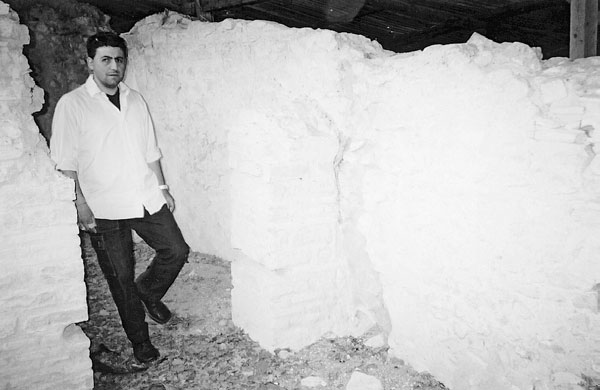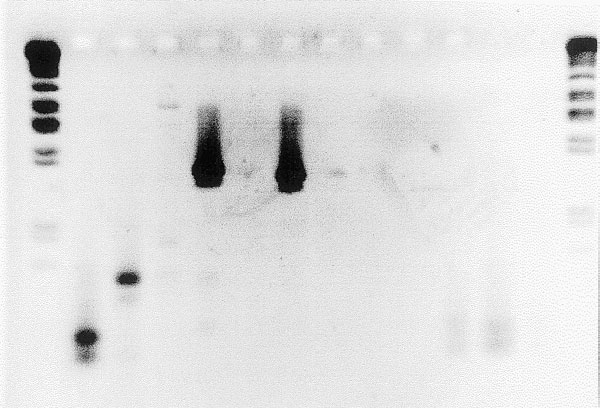Malaria and Rome: A History of Malaria in Ancient Italy (14 page)
Read Malaria and Rome: A History of Malaria in Ancient Italy Online
Authors: Robert Sallares
Tags: #ISBN-13: 9780199248506, #Oxford University Press, #USA, #History

⁴⁵ Lancisi (1717: 42).
⁴⁶ Corti (1984: 665) commented on the attitudes of Italian peasants to the dog-star period in more recent times.
⁴⁷ Theophrastus,
CP
1.13.5–6, ed. Einarson and Link (1976): ËpÏ g¤r tÏ £stron [sc. ƒn t∫
toı KunÏß ƒpitol∫] ka≤per Ôntoß ƒmp»rou toı åvroß, Òmwß ka≥ nÎtia pne∏ ka≥ nvfh sun≤statai ka≥ aÛt¤ t¤ dvndra diugra≤netai faner0ß ka≥ ËpÏ tÏn floiÏn aÛt0n diad≤dota≤
tiß ËgrÎthß, Òqen ka≥ Âoa≥ ka≥ kat¤ toıton tÏn kairÎn, e÷te oˆn sunelaunomvnou toı Ëgroı ka≥ åntiperist3sewß ginomvnhß, e÷te di’ £llhn ajt≤an: pl¶n sumba≤nei ge toıto ka≥ to∏ß ånqr*poiß: diÏ ka≥ koil≤ai m3lista l»ontai, ka≥ pureto≥ pollo≥ g≤nontai, kaqugrainomvnwn t0n swm3twn.
Ecology of malaria
63
Corneto (Tarquinia) near the coast the maximum number of cases did not occur until November in some years.⁴⁸ Marchiafava noted that even shepherds, who brought their flocks of sheep down from the mountains to graze in the Roman Campagna as part of the traditional pattern of transhumance at the end of the autumn, were still very vulnerable to infection with
P. falciparum
malaria at that time. Similarly there were a significant number of new cases in November at Grosseto during the epidemic of 1910. This is possible because
A. labranchiae
continues to be active in houses during the winter.⁴⁹ The seasonal mortality peak, which as will be shown later was indeed primarily caused by malaria, as Scheidel argued, was such a striking phenomenon that it was even noticed in antiquity.
The author of the pseudo-Aristotelian
Problems
stated that the number of deaths was much higher in the hundred days after the summer and the winter solstices, and the autumn was less healthy than the spring.⁵⁰ The seasonality of disease patterns in Mediterranean countries in antiquity, which was shaped above all else by malaria, had a long history of discussion in ancient medical writers stretching back to the Hippocratic
Aphorisms
.⁵¹
Pliny the Elder followed the agronomists on the dangers of farming in unhealthy districts, recommending that villas should not be placed near marshes or next to rivers.⁵² He added the following intriguing comment:
The healthiness of a locality is not always revealed by the complexion of the inhabitants, since those who are accustomed to such conditions can continue working even in pestilential areas.⁵³
⁴⁸ Celli (1900: 148–56). Aitken (1873) presented the following statistics for deaths directly from pernicious intermittent fevers in the city of Rome in 1872: 52 from January 1 to March 24, 39 from March 25 to June 16, 199 from July 15 to October 6, and 109 from October 7 to December 29. Rey and Sormani (1881) analysed mortality from malaria and other diseases in Rome on a weekly basis for the years 1874–6. Dobson (1997: 203–20) discussed seasonal patterns in the English marshlands.
⁴⁹ Marchiafava (1931: 52); Bellincioni (1934: 203), quoting G. Memmi’s observations at Grosseto in 1910; Herlihy (1958: 48–53) and Cipolla (1992: 79, 90 n. 6) on Pisa. Corradi (1865: i. 455–6) described malaria at Pisa in October–November 1530.
⁵⁰ [Aristotle]
Problems
1.26–7.862b: åpoqn&skousi m3lista.
⁵¹ For references to the
Aphorisms
see Sallares (1991: 467 n. 381).
⁵² Pliny,
NH
18.7.33:
convenit neque iuxta paludes ponendam esse neque adverso amne, quamquam Homerus omnino e flumine semper antelucanas auras insalubres verissime tradidit
. It is interesting that he interpreted the Homeric line (
Odyssey
5.469) as referring to the unhealthiness of rivers.
⁵³ Pliny,
NH
18.6.27:
salubritas loci non semper incolarum colore detegitur, quoniam adsueti etiam in pestilentibus durant
.
64
Ecology of malaria
Celli interpreted this statement and various kinds of proxy data (discussed in Ch. 9 below) as evidence that malaria was milder in Pliny’s time than it was in certain other periods, in support of his cyclical theory of malaria in the Roman Campagna. There is in fact no reason for supposing that
P. falciparum
has ever displayed anything other than extreme virulence throughout its lengthy evolutionary history, as was suggested in Chapter 3 above following the latest scientific research.There was little detailed understanding of either inherited or acquired immunity to malaria in Celli’s time.
Either or both of these types of immunity (discussed in Chs. 4. 2 and 5. 3 below) provide a better explanation for Pliny’s statement than Celli’s inference that
P. falciparum
malaria was milder then.⁵⁴
Malaria was as active in central Italy in late antiquity as it was in the late Republic and early Empire. According to his own account Sidonius Apollinaris was infected while travelling through Umbria, next to ‘the pestilential region of Tuscany’, along the Via Flaminia from Ravenna to Rome in 467. (‘I entered and left immediately the other towns along the Flaminian road, moving forward with Picenum on the left and Umbria on the right; in Umbria either the Atabulus wind from Calabria or the pestilential region of Tuscany infected my body as I breathed in the air saturated with poison which caused alternate fevers and chills. Meanwhile fever and thirst devastated the inside of my body, my heart and marrow.’)⁵⁵
This suggests that the disease had already matched by then its distribution in the early modern period, when Doni (an important figure in the historiography of malaria who will be formally introduced in Ch. 8 below) noted in the seventeenth century that the section of the Via Flaminia closest to Rome was unhealthy. Some parts of Umbria were certainly very healthy, for example Spoleto, which was singled out by Doni in this respect. Nevertheless other sources confirm the active presence of malaria in some regions of Umbria, for example around Narni where seasonal migrant farm ⁵⁴ Celli (1933: 42). G. Brasacchio, quoted by Arlacchi (1983: 179), described the physical appearance of the inhabitants of the Crotonese as follows: ‘the pallor characteristic of malaria is hidden beneath the deep brown skin burnt by the summer suns, which give to the face a curious olive colour’. This also provides a reasonable explanation for the problem that concerned Celli. Mabeza
et al
. (1998) argued that intense pallor is associated with an increased risk of death in childhood malaria.
⁵⁵ Sidonius Apollinaris,
Letter to Heronius
1.5.8:
hinc cetera Flaminiae oppida statim ut ingrediebar egressus laevo Picentes, dextro Umbros latere transmisi; ubi mihi seu Calaber Atabulus seu pestilens regio Tuscorum spiritu aeris venenatis flatibus inebriato et modo calores alternante, modo frigora vaporatum corpus infecit. Interea febris sitisque penitissimum cordis medullarumque secretum depopulabantur
.
Ecology of malaria
65
N
L a g o
Corciano
Tra s i m e n o
Perugia
Assisi
Chiusi
U M B R I A
Foligno
erTiber
Riv
Todi
Orvieto
Spoleto
Lago di
M O N T I VO L S I N I
Corbara
Bolsena
L a g o d i
Lugnano in
B o l s e n a
Teverina
L a g o d i
Terni
Amelia
Visentium
A l v i a n o
Nami
Acquarossa
Tuscania
Viterbo
Ocriculum
Rieti
M O N T I C I M I N I
L a g o d i
Collevecchio
V i c o
Falerii Novi
Blera
Falerii Veteres
Sutri
Nepi
San Giovenale
Monterosi
L a g o d i
Capena
B ra c c i a n o
Tolfa
Baccano
Lucus Feroniae
iber
T
Nomentum
Pyrgi
Veii
iver
Caere (Cerveteri)
(Isola Farnese)
R
Tivoli
Map 2. Umbria and northern Lazio

66
Ecology of malaria
10. Part of the ruins of the Roman villa of Poggio Gramignano, near Lugnano in Teverina, Umbria, with Alessandro Dimiziani. The infant cemetery, which was established in the ruins of the villa in the fifth century , is the source for the first malaria epidemic in the ancient world to be documented archaeologically and through the use of ancient DNA.
labourers from the Marche sometimes became infected in the nineteenth century. In 1832 a local doctor, Angelo Sorgoni, made the very interesting observation that the migrant farm workers from the Marche, who could only have experienced
P. vivax
malaria in the Marche (unlike the natives of the region around Narni, where P. falciparum
malaria also occurred) were more severely affected by attacks of pernicious malaria (
P. falciparum
) and required higher doses of quinine for treatment than the inhabitants of Narni. This situation suggests a degree of endemicity of
P. falciparum
malaria in south-western Umbria in the early nineteenth century sufficient to lead to the build-up of some acquired resistance in adults in the local population.⁵⁶
David Soren and his colleagues have interpreted a child cemetery dating to the fifth century , excavated recently in the ruins of ⁵⁶ Doni (1667: 91, 115); Foschi (1983: 112) on Narni; Sorgoni (1832). Procopius,
BG
1.17.6–11
described the site of the town of Narni itself, which was healthy as it is situated on a hill (244
metres above sea level). Pezzella (1997: 109, 159) recorded references to quartan fever in early modern texts of herbal medicine from Umbria.

Ecology of malaria
67
11. PCR products amplified from the Lugnano bones with oligonucleo-tide primers for malaria 18S ribosomal DNA. Video print taken by Susan Gomzi. See Sallares and Gomzi (2001) for further discussion.
an abandoned villa at Poggio Gramignano near Lugnano in Teverina, not far from the Tiber in southern Umbria, as the result of an epidemic of
P. falciparum
malaria.⁵⁷ The site of the cemetery (185
metres above sea level) is located about 3.5 kilometres away from the river Tiber, which is visible in the distance down gently sloping land, a typical location for malaria in western central Italy. The location of the corresponding settlement is not known, but it was probably closer to the river. The dead, who were apparently buried over a short period of time, were almost all infants, neonates, or foetuses. The foetuses were the product of miscarriages of pregnant women, especially primigravidae, who are particularly vulnerable to malaria owing to suppression of the immune system during the last two trimesters, while infants and young children usually bear the brunt of direct mortality from
P. falciparum
malaria. Numerous studies have shown that
P. falciparum
malaria can cause an extremely high rate of miscarriages in pregnant women in areas of seasonal transmission with epidemic malaria. One survey of a series of cases ⁵⁷ Soren
et al
. (1995); Soren and Soren (1999).
68
Ecology of malaria
in the United States in the first half of the twentieth century yielded a foetus mortality rate of 60%. Similarly many abortions occurred in pregnant women during the Monte Cassino epidemic in 1944, the last major malaria epidemic in the history of modern Italy.⁵⁸
The circumstantial evidence derived from the archaeological excavations for this interpretation of the Lugnano cemetery is currently being supplemented by studies of ancient DNA from the bones. One of the skeletons has yielded ribosomal DNA from P. falciparum
, confirming its presence at Lugnano in the fifth century . Mario Coluzzi told the author that
A. labranchiae
occurred as far up the Tiber valley as Orte, only a few kilometres from Lugnano, as recently as the time of the Second World War. Further north it was replaced by
A. atroparvus
. Consequently the Lugnano epidemic in the fifth century occurred on the edge of the geographical distribution of both
A. labranchiae
and
P. falciparum
. It suggests that both had reached their maximum distributions in western central Italy by the mid-fifth century . In the past the town of Lugnano in Teverina itself was probably immune from malaria, since it is situated 450 metres above sea level. However, there are plenty of mosquitoes, which were observed by the author on a visit to the area, in the surrounding lowlands, but only
Culex
mosquitoes occur in the region today.⁵⁹